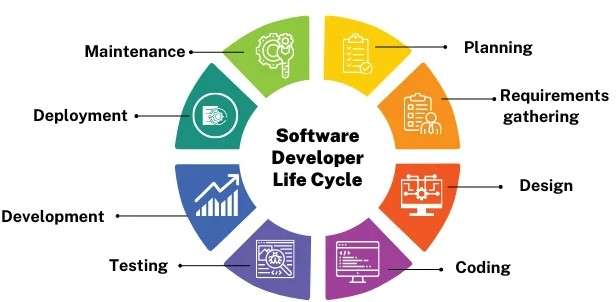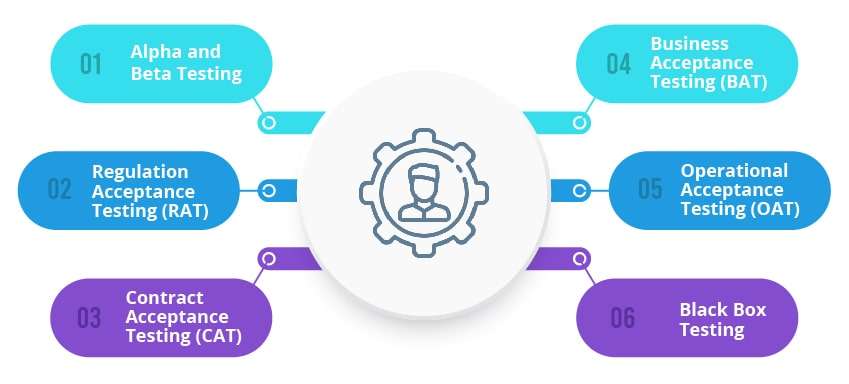
- Introduction to User Acceptance Testing
- Why is UAT Crucial in the Software Development Life Cycle?
- Who Performs UAT?
- When is UAT Conducted?
- Key Objectives of UAT
- Types of User Acceptance Testing
- Steps Involved in UAT Process
- UAT Entry and Exit Criteria
Introduction to User Acceptance Testing
User Acceptance Testing (UAT), also known as uat user acceptance testing, is a crucial phase in the software development lifecycle where the end users validate the system against their requirements. This stage ensures that the software not only works as intended but also meets real-world business needs. Often performed after system and integration testing, User Acceptance Testing software helps verify that the product is ready for deployment in a live environment. It is conducted by actual users in a simulated production environment, making it the final checkpoint before the software goes live. The core objective of Acceptance testing in software testing is to detect any functionality gaps or usability issues from the user’s perspective, which might have been overlooked by developers or QA teams. Test cases in UAT are generally based on user scenarios and business requirements, ensuring the system behaves as expected in real-world operations. By involving stakeholders directly, this testing phase helps avoid costly fixes post-launch and builds user confidence in the system. Ultimately, User Acceptance Testing software plays a vital role in delivering a successful, user-approved application, ensuring a smoother transition to production and higher overall satisfaction for both the business and its users.
Are You Interested in Learning More About Software Testing? Sign Up For Our Software Testing Certification Training Today!
Why is UAT Crucial in the Software Development Life Cycle?
- Validates Business Requirements: UAT confirms that the software meets the business needs outlined in the Acceptance test plan, ensuring the final product delivers real-world value to stakeholders.
- Improves User Satisfaction: By involving actual users in testing, especially in tools like ServiceNow UAT, teams can gather actionable feedback, improve the user experience, and increase adoption.
- Identifies Usability Issues Early: UAT helps spot usability gaps and workflow mismatches that internal QA might miss, especially in complex environments supported by UAT testing tools.
User Acceptance Testing (UAT) is a pivotal stage in the Software Development Life Cycle (SDLC) that ensures the product aligns with business goals and end-user requirements. Whether you’re using traditional methodologies or UAT in Agile environments, validating the software with real users before deployment reduces the risk of project failure. Here’s why UAT matters:

- Reduces Cost of Late Fixes: Detecting issues at the UAT stage is far cheaper than post-deployment fixes, safeguarding both budget and timelines.
- Supports Agile Iterations: In UAT in Agile, continuous user feedback during sprints enables faster iterations and helps teams stay aligned with evolving requirements.
- Enables Test Automation: Leveraging UAT automation tools ensures repetitive user scenarios can be tested efficiently, enhancing both speed and accuracy.
Who Performs UAT?
User Acceptance Testing (UAT) is typically performed by the end users or business stakeholders who will ultimately use the system in a real-world environment. Unlike developers or QA testers, these users focus on validating whether the system meets their functional and business requirements. In most organizations, UAT is conducted by product owners, business analysts, client representatives, or key users who have deep knowledge of the business processes the software is designed to support. These individuals use User Acceptance testing software or manual test cases to simulate real-life scenarios and ensure the application behaves as expected. The goal is not to find bugs in code but to confirm that the system aligns with the original business objectives and user expectations. Acceptance testing in software testing serves as the final checkpoint before deployment, making it critical to involve the right people who understand the operational needs. In uat user acceptance testing, having knowledgeable testers ensures that usability issues, missing functionality, or workflow mismatches are identified early. Their approval signifies that the product is ready to move into production. Ultimately, involving actual users in UAT ensures the software delivers business value and increases the likelihood of successful adoption after launch.
To Explore Software Testing in Depth, Check Out Our Comprehensive Software Testing Training Course To Gain Insights From Our Experts!
When is UAT Conducted?
- After System Testing Is Complete: UAT begins only after all internal testing (unit, integration, and system testing) is successfully completed, ensuring a stable environment for real-user validation.
- Before Product Go-Live: UAT acts as the final checkpoint before the software is deployed in production, helping teams catch any last-minute issues through tools like UAT testing tool.
- During Release Cycles in Agile: In UAT in Agile environments, testing may happen in shorter cycles at the end of each sprint, allowing for continuous feedback and iterative improvements.
User Acceptance Testing (UAT) is conducted as the final phase before a software product goes live. It comes after system and integration testing, once the development team confirms that the application is functionally complete and technically stable. UAT ensures that the software meets business requirements and user expectations as outlined in the Acceptance test plan. Here are six key moments when UAT is typically conducted:

- Post Feature Freeze: UAT is often scheduled after the feature set is finalized to ensure users test the actual release candidate without further code changes.
- In Enterprise Platforms Like ServiceNow: Platforms such as ServiceNow UAT have structured testing windows to align with release management and change control processes.
- Before Automating User Scenarios: Initial manual validation in UAT is crucial before implementing UAT automation, ensuring the scenarios are business-relevant and bug-free.
Key Objectives of UAT
The key objectives of User Acceptance Testing (UAT) revolve around ensuring that the software product meets business requirements, delivers a seamless user experience, and is ready for deployment in a live environment. At its core, uat user acceptance testing aims to validate whether the system behaves as expected when used by real users in real-world scenarios. This is a crucial step in the development lifecycle, as it bridges the gap between technical implementation and business needs. By using User Acceptance testing software, testers simulate actual usage patterns to detect any functional gaps, workflow mismatches, or usability issues that may not have been identified during earlier testing phases. One of the primary goals is to ensure that the software aligns with the goals and expectations outlined in the project requirements. Additionally, Acceptance testing in software testing helps confirm system stability, performance under real conditions, and overall readiness for production release. It provides stakeholders and business users with an opportunity to validate the system from their perspective, ensuring confidence in the final product. Ultimately, the objective of UAT is to minimize post-release defects, enhance user satisfaction, and deliver a product that truly adds value to the organization.
Types of User Acceptance Testing
- Alpha Testing: Conducted in-house by internal staff, Alpha testing verifies that the product functions as expected before it’s exposed to external users.
- Beta Testing: In this type of Acceptance testing in software testing, a select group of actual end users tests the product in a real-world environment to uncover usability or functionality issues.
- Contract Acceptance Testing: This ensures the software meets the conditions agreed upon in a contract, often guided by detailed requirement documents or service-level agreements.
- Regulation Acceptance Testing: It verifies the software complies with legal or regulatory requirements, especially critical in industries like healthcare or finance.
- Operational Acceptance Testing: This involves checking backup plans, security measures, and disaster recovery protocols to ensure system readiness.
- Black Box Testing: Performed without knowledge of internal code, this focuses purely on inputs and expected outputs using User Acceptance testing software tools.
User Acceptance Testing (UAT) ensures that the developed software meets business requirements and is ready for end-user deployment. Different types of UAT are used based on the project scope, user involvement, and testing environment. Understanding these types helps teams choose the right approach to validate functionality using User Acceptance testing software or manual methods. Here are six common types of uat user acceptance testing:
Steps Involved in UAT Process
The User Acceptance Testing (UAT) process involves several structured steps to ensure the software meets business requirements and is ready for production deployment. It begins with planning, where stakeholders define the scope and objectives through an Acceptance test plan, which outlines the test scenarios, success criteria, and responsibilities. Next, test cases are designed based on real-world business workflows, often using a UAT testing tool to manage execution and reporting. The environment is then set up, typically a mirror of the production setup, especially in enterprise platforms like ServiceNow UAT, where accurate configuration is crucial. Following setup, testers often end users or business analysts execute the test cases manually or through UAT automation for repetitive tasks, logging results and identifying discrepancies. Defects are reported, prioritized, and resolved collaboratively between testers and the development team. Once issues are fixed, retesting is done to confirm resolution. In UAT in Agile, this process is iterative and embedded within each sprint, allowing continuous user feedback. Finally, after all test cases pass and users approve the system, a formal sign-off is given, indicating the software is ready for production. This structured process ensures user confidence, minimizes post-release issues, and supports a successful product launch.
Want to Pursue a Software Testing Master’s Degree? Enroll For Software Testing Master Program Course Today!
UAT Entry and Exit Criteria
UAT entry and exit criteria are essential components of the uat user acceptance testing process, defining the conditions that must be met before starting and concluding UAT. The entry criteria ensure the software is stable and ready for real-user validation. These typically include the completion of system and integration testing, availability of test data, finalized business requirements, approval of the Acceptance test plan, and a configured UAT environment. Additionally, all critical defects must be resolved, and the User Acceptance testing software or tools must be in place for test execution and tracking. Once these conditions are satisfied, UAT can begin with selected business users simulating real-world scenarios to validate the software’s usability and functionality. The exit criteria, on the other hand, define the standards that must be achieved to consider UAT complete. These include successful execution of all test cases, resolution of high-priority defects, sign-off from business stakeholders, and documentation of test results. In Acceptance testing in software testing, meeting exit criteria is crucial to ensure the application is ready for production deployment. Clearly defining UAT entry and exit criteria helps maintain testing discipline, ensures user satisfaction, and reduces the risk of post-launch issues by validating that the software is truly fit for business use.

